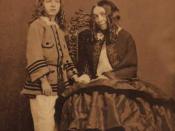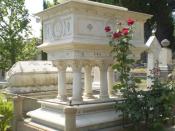Hersey's narrative of Toshiko Sasaki ends with Sasaki making a speech celebrating her 25th year of being a nun. The story Sasaki ends off with her speech "I shall not dwell on the past. It is as if I had been given a spare life when I survived the A-bomb. But I prefer not to look back, I shall keep moving forward" This shows that at the least, Sasaki had forgiven the Americans for this immoral act, despite the fact that it was they, who left her crippled after the bombing. The ending of the narrative presents Sasaki's story to have a happy ending, her life was not destroyed after the incident of the A-Bomb, and she actually survived it and came out to be stronger. The quote "if it doesn't kill you, it will just make you stronger" fits perfectly with Sasaki. It seems as if her story was about Christian redemption, helping others with their pain after she experienced hers.
She had to go through a very large ordeal to come out and be 'closer' to god. God has made her someone, and not just a hibakusha or a victim.
After the 6th of August 1945, Toshio Sasaki was trapped underneath an iron shelf next to a fellow workmate at a tin factory where she was working. She was trapped underneath the shelf for 48 hours before any help had arrived, when she was taken out from under the shelf, her leg was left badly disfigured and seemed as if it was broken. Hersey portrays Sasaki to be the helpless victim here, someone who was doing their daily work, and then suddenly a bomb drops, leaving her suffering in pain.
The story moves on to Sasaki being left in a courtyard with two other victims for three...


